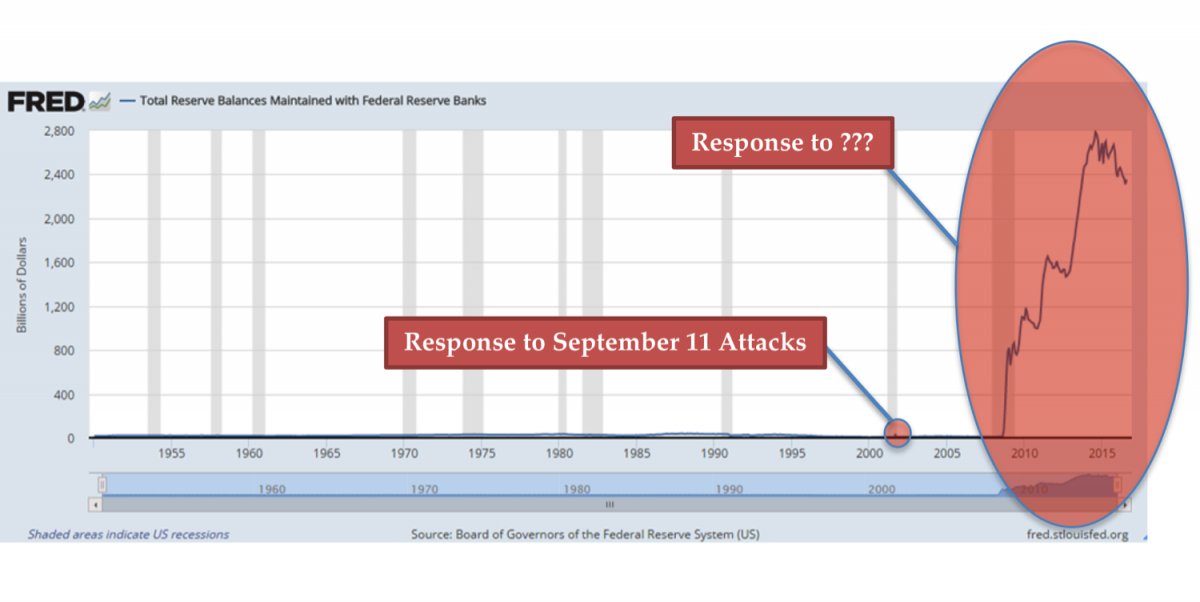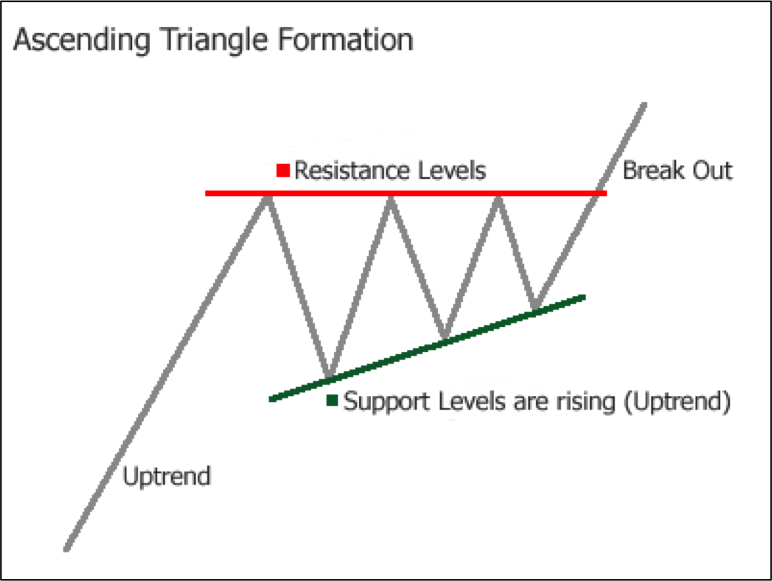US Dollar Is Forming A Long-Term Top

We have significant concern that the US dollar is now forming a long-term top. Moreover, we may see a devaluation of up to 50% in value of the dollar over the coming decade. The fundamental backdrop is already in place with the unprecedented money creation by the Federal Reserve since 2008. Confirming technical indicators of a fall in the value of the dollar will be shown through an examination of past dollar-devaluation cycles.
While the Fed last week once again did not raise interest rates, the significant market reaction seen on Wednesday was based on the change in the wording used in the accompanying policy statement. Whereas over the past few meetings, the Fed has given little indication that it was considering a second interest rate hike, this time the central bank used the following distinct language: "The case for an increase in the Federal Funds Rate has strengthened."
As investors, we must remember we are still living in an unprecedented age for low interest rates. At the 0.25% - 0.50% target rate, this is still the lowest that interest rates have been in Federal Reserve history, including the following two critical time periods:
- The Great Depression: rates hit a low of 1.5%
- World War II: rates hit a low of 1.0%
Can we imagine that what is happening in the world economy currently must be deemed by the Federal Reserve to be more severe than both the Great Depression and the largest international conflict in the history of the world?
Not only are rates lower than in each of these periods, but they have been held lower for a greater number of years than at each of these previous troughs, now eight years and counting below the 1.0% mark. Of course, holding interest rates so low requires a continuous electronic "printing" of new money, which is used to buy the entire short-end of the interbank bond curve. The longer that rates are held below what the market would naturally set them at -- usually between 2.0% - 5.0% -- the more inflation the Fed is building underneath the system.
The data to support this coming wave of inflation can be seen from the graph of the total reserve balances held at the Fed. Recall that what appears on this chart is money the Fed has created in order to buy sufficient bonds needed to force interest rates lower:
We can see that there is no precedent for the amount of money created since 2008. The Fed -- and other major world central banks -- have embarked on a money-printing spree that will go down in history as an experiment like none other. Note that there *is* a line on this graph dating back to 1950... it is just so low on the Y-axis that it barely registers when compared to the nearly $2.4 trillion created by the bank since 2008.
The strange thing about inflation is that once central banks create it -- they cannot control precisely where it flows after it enters the broad economy. Similar to turning on a fire hose in an attempt to water the garden flowers, some may flow to the intended destination, but far more will eventually flow to unintended areas.
Thus far, the recipients for most of the inflation are clear, which we have discussed in past issues. They are world bond and stock markets, which are both at all-time highs simultaneously (in itself an unprecedented situation).
But nothing happens in a vacuum.
Newton's Third Law of Physics says: "For every action there is an opposite and equal reaction." And it appears that the unintended consequence of the Fed's actions are about to be felt elsewhere: in the US dollar.
US Dollar
The chart below shows the US dollar as measured by the Dollar Index, a trade-weighted basket that measures the value of the US currency versus the sum of the following:
- Euro (EUR), 57.6% weight
- Japanese yen (JPY) 13.6% weight
- Pound sterling (GBP), 11.9% weight
- Canadian dollar (CAD), 9.1% weight
- Swedish krona (SEK), 4.2% weight
- Swiss franc (CHF) 3.6% weight
We have been following this chart now for several months, as the dollar has been consolidating for nearly two years between the 92 level and the 100 level on the index. Over the long run, we expect gold and silver to be moving higher in all currencies, no matter what happens with one fiat currency versus another. However, over the short run, gold tends to see its most significant advances when the US dollar is weak, as gold is priced primarily in US dollars for purposes of international trade.
Thus, let us remember that the advance seen in gold from the December 2015 low of $1,045 per ounce to the recent high of $1,378 has taken place within a backdrop of a relatively stable US dollar, which has only fallen from 100 to 95 on the Index.
It appears that gold is now waiting for further signals from the currency market in order to begin its next move. Consequently, as the dollar has continued to consolidate, so has gold.
Yet these consolidations will not continue forever.
Recent Technical Analysis On The Dollar
On the chart above, we can see converging sets of trendlines, shown in royal blue for primary downward trend and teal for short-term uptrend. These trends have been converging since December 2015 and May 2016, respectively. One of these trends is due to break within the next 4-8 weeks.
The nearly two-year consolidation in the dollar is increasingly taking the form of a broad long-term top. Indeed, it would be rare to see such a lengthy pattern resolve to be a continuation move higher.
From the short-term perspective, our "hints" that the break will be lower come from the two cracks in the support zone below 93 on the index. These cracks have been warning signs that buyers of the dollar are not as resolute in supporting the currency as many would believe. This is in contrast to the resistance zone at 100, which has shown very distinct and unhesitant selling pressure each time that level is reached.
Should the lower converging (teal color) trendline break in the dollar in the coming weeks, the currency should be making new lows below the 92 region in short order. This move is expected to coincide with the converse breaking of the long-term downtrend that has held the price of gold lower from 2011 - present (see our previous article.
Euro / US Dollar Long-Term Perspective
As stated above, the Euro represents 57.6% of the makeup of the Dollar Index. As it is the overwhelming component of the Index, the way the Euro goes, conversely so moves the Dollar Index. We thus now turn to the long-term perspective of the EUR/USD cross-pair:
Above we are looking at the number of US dollars needed to purchase one Euro. Currently at 1.12, the Euro is slightly stronger than the dollar.
Note that this chart extends back to 1953. Because the Euro began to be phased in between 1999 and 2002, the data prior to 2002 is derived from what was and still is Europe's largest economy: Germany (Deutsche mark).
Prior to 1971, as the world was still on the Bretton Woods agreement, most currencies were still tied to the value of the dollar. Thus we see a lack of relative volatility in the (mark/Euro)/dollar cross pair prior to 1971, with a huge increase in volatility after the dollar was severed from the gold standard during the breakup of Bretton Woods that year.
The big picture technical perspective as shown above is an ascending triangle pattern in favor of a long-term advance in the Euro relative to the dollar. The pattern derives its name from the clear triangle shape that can be seen forming in the price action. With a multi-decade resistance zone between 1.40 - 1.50 dollars per Euro, and a rising linear support line dating back from 1985, the pattern represents a market that is in the process of revaluing higher (in favor of the Euro), as sellers of the dollar emerge at increasingly lower levels at each major dollar top.
In this case, when the pattern successfully breaks the resistance zone, the long-term target based on the triangle pattern would be near 2.25 dollars per Euro, or just over a 50% loss of value in the dollar from the current value of 1.12.
Note the red highlight circles. These show the increasing relative lows in the Euro (highs in the dollar) that have formed since 1985. The entirety of the suspected top in the dollar (see page 3), plotted inversely, would fit precisely into the farthest right highlight circle. We believe that the current formation seen in the dollar is a top of similar magnitude to the one that previously formed in 2001 and then in 1985 before it.
Note that these tops in the dollar and converse bottoms in the Euro have been forming at a nearly perfect 16-year interval periods: 1985 ---> 2001 ---> 2017.
It was the previous bottom in the Euro / top in the dollar in 2001 that led to the beginning of the 2001-2011 bull market in precious metals, which saw gold rise from $250 to over $1,900, over 650%. The current top in the dollar is of greater significance to the one seen in 2001 because it will likely be the last major top before the 50% devaluation of the dollar occurs toward 2.25 on the Euro. We thus expect that the bull market set to unfold in precious metals over the coming decade will be of similar duration and perhaps greater scale than that of 2001 - 2011.
Fundamentally, a 50% loss in value of the dollar could only occur from all of the dollars created by the Federal Reserve since 2008 finally looking for an exit via the foreign exchange market. Such a move would see large multinational institutions move reserves into other currencies for safety: some will move into the Euro, some will move into the Japanese yen, some into the Swiss franc. Yet as each of these countries will also be simultaneously debasing their own currencies in an attempt to not disrupt world trade, gold should emerge as the reserve asset of last resort.
Unfortunately, those hurt most in a dollar devaluation will typically be those least able to prepare for it: i.e. those on fixed incomes of dollars, typically retirees on pensions; and the poor on social welfare.
Those able to prepare ahead of time can profit from the situation, as the price advances in the precious metals should more than offset the losses in the dollar or other fiat currencies. As the quantity of gold available for purchase is insufficient to absorb the quantity of dollars that will be looking for refuge, a revaluation higher in the metals will be forced to occur.
We should continue to monitor the Euro/dollar cross-pair over the coming months for confirming indicators of this multi-year dollar top, which is a key backdrop for the long-term precious metals thesis. From a technical standpoint, a break of the 1.17 EUR / USD level -- the upper region of the ongoing 2-year consolidation -- will set in motion the initial stage of the gold advance vis-a-vis dollar devaluation that we are referencing.
********
Free Gold-Eagle Newsletter!
- Fresh weekly insights on gold, precious metals, and the economy
- Leading authors from around the world
- Always free
- Stay informed!
Free Gold-Eagle Newsletter!
- Fresh weekly insights on gold, precious metals, and the economy
- Leading authors from around the world
- Always free
- Stay informed!






















